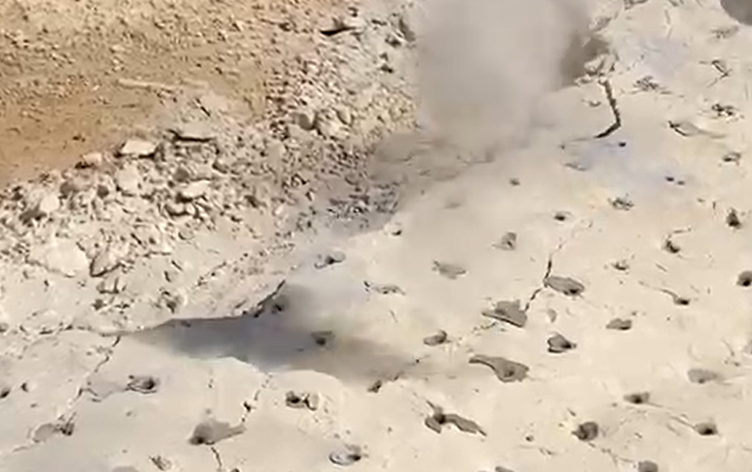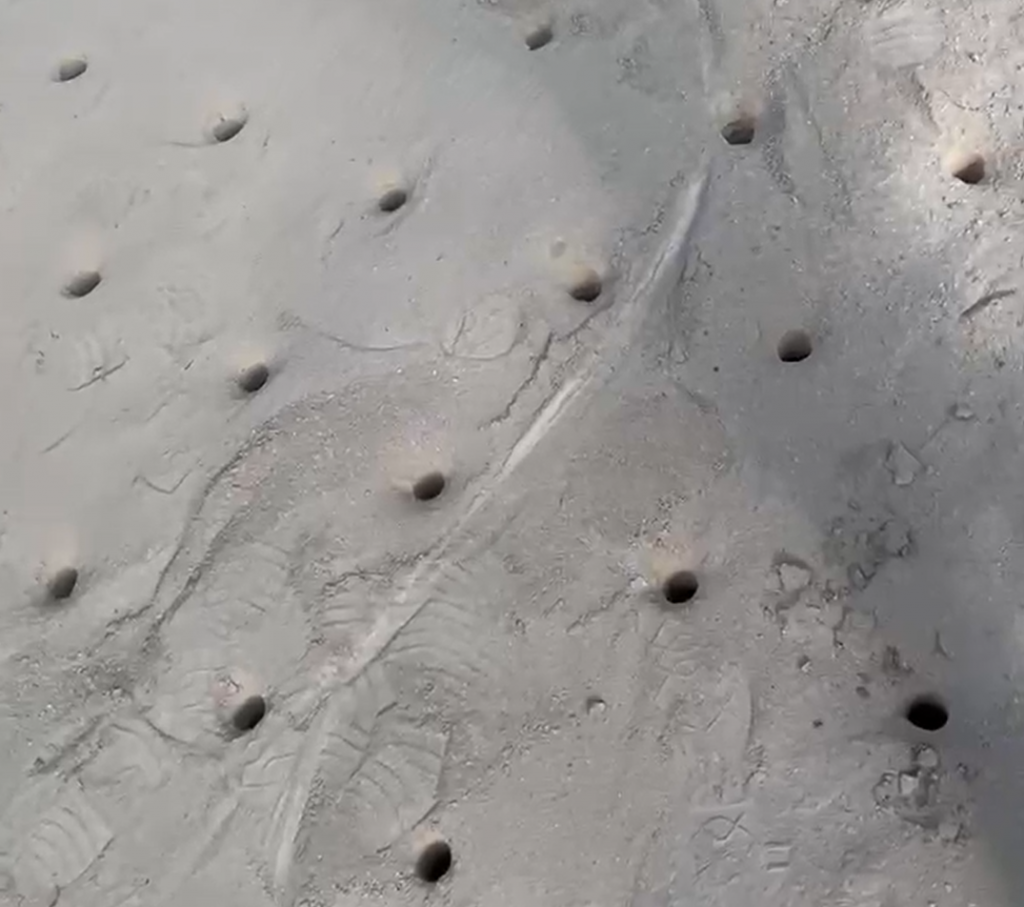Breaking Ground with Expanding Demolition Grout


There’s more than one way to break apart a rock, or an old retaining wall, or any other dispensable stone or concrete structure. From jackhammers to dynamite, demolitionists have always had options. Here Mike Nantz discusses a lesser known method that is both quieter and more precise than other more dramatic forms of deconstruction.
By Mike Nantz
When you’ve been in business as long as I have, discovering something new and surprising is fairly rare. That was the case, however, when I was recently introduced to “expanding demolition grout.” As the name suggests, it’s a form of grout that is used to destroy stuff.
More precisely, expanding demolition grout is a non-explosive demolition agent used to break rock and concrete structures safely and efficiently. It has a wide range of applications, from demolishing swimming pools to breaking down large concrete structures, making it an essential tool in construction and demolition projects.
Although new to me, it has been around for quite a while. The development of expanding demolition grout dates back to the mid-20th century when there was a growing need for safer and more controlled demolition methods. Traditional methods like explosives and jackhammers posed significant risks, including safety hazards, noise pollution, and structural damage to surrounding areas and structures.
The introduction of expanding demolition grout provided an innovative solution that addressed these concerns. In my case, it was used to help build a swimming pool, while keeping the neighbors happy.
NEEDED BREAK
I was working on a pool design for a wealthy homeowner in Austin, TX. To make a long story short, the property is located on a bed of solid and very hard limestone. In most situations, digging the hole would require extensive jackhammering with a tractor mounted hydraulic hoe ram, which is very, very noisy, and would take several days to break through and hog out the limestone spoils.
Although the home is in an extremely upscale neighborhood, it’s an older development with a relatively small “lot size to house ratio” making the houses quite close together. That meant that the noise associated with the hammering excavation, and the vibration into the surrounding foundations, would have been a significant problem for the neighbors; and, in this case, would have been a deal breaker.
Fortunately, the home builder I was working with on the project had a seasoned excavator/demolition crew on site that offered a solution — expanding demolition grout. Although I was unfamiliar with the concept, an online search later that night in my hotel room revealed that the material is often composed of a mixture of various chemicals, but mainly calcium oxide, and is used to fill drilled holes in the target structure, in this case large layers of bedrock. The calcium oxide, aka “quicklime,” reaction with water is associated with an increase in volume by a factor of at least 2.5.
Thinking things through; I am not a chemist nor engineer but I wanted to ensure no long-term deleterious effects on the pool structure I was about to place atop the treated-excavated-rock area. Could there be an expanding effect on my structure from any residual grout? Could there be an ASR like chemical reaction with my structure? I dug a little more, made a few calls, found no concerns, and determined all systems were a go.
It’s a simple process:

To begin with, holes were drilled throughout the pool floor to specified depths. The drilled holes — within a five-foot-wide area across the width of the shallow end — were treated with the grout. I departed the site shortly after the treatment but came back six hours later to find the five-foot wide area had heaved upward, the next day the heave was even more pronounced, six inches or more, the rock was cracked and broken in that zone and made for easy removal with a backhoe.
Ironically, one of the notable applications is, as mentioned above, the demolition of swimming pools. I’ve been involved with many swimming pool remove and replace projects but never was demolition grout considered. Having now used it in an excavation capacity, I can see how there are other similar applications. The savings on labor alone make it worthwhile. Another arrow in my quiver!
Expanding grout offers a quieter, safer, and more precise method for breaking down the concrete walls and floors of pools, or other structures without causing excessive vibrations or noise. By comparison, traditional demolition methods could be disruptive and damaging to surrounding structures.
The material is also widely used for breaking down large concrete structures, such as bridges, foundations, and retaining walls. The controlled expansion allows for targeted demolition, minimizing the risk of unintended damage to nearby structures and reducing the need for heavy machinery.
In tunneling and mining operations, expanding demolition grout is used to fragment rock formations. This method reduces the risks associated with blasting, such as fly-rock and seismic activity, ensuring a safer working environment.
TAKING ADVANTAGE
Intrigued by the material and the method, I did a bit of my own research and discovered, that expanding demolition grout is catching on for some very good reasons.
[] Safety: Unlike explosives, expanding demolition grout does not pose significant safety risks. The controlled expansion minimizes the risk of accidents and injuries. [] Environmental Impact: The use of expanding grout reduces noise and dust pollution, making it an environmentally friendly option. [] Noise reduction: It’s a mostly quiet process that uses chemistry and physics, rather than explosions or brute mechanical force to get the job done. [] Precision: As mentioned above, the controlled expansion allows for precise demolition, reducing the risk of damage to surrounding structures. [] Cost-Effective: Expanding grout can be more cost-effective than traditional demolition methods, especially when considering the reduced need for heavy machinery and labor. [] Ease of Use: The process of using expanding grout is relatively simple, requiring minimal training and equipment.EXPANSIVE POTENTIAL
Not surprisingly, expanding demolition grout is gaining acceptance in the construction and demolition industries due to its numerous advantages. Its safety, environmental benefits, and cost-effectiveness make it an attractive option for various applications.
Additionally, as regulations around construction site safety and environmental impact become stricter, the demand for non-explosive and low-impact demolition methods like expanding grout is expected to rise.
Expanding demolition grout certainly represents a significant advancement in demolition technology. Its ability to safely and precisely break down concrete and rock structures has made it a valuable tool in various industries. As awareness of its benefits continues to grow, expanding demolition grout is likely to become an increasingly common choice for construction and demolition projects.
Mike Nantz is principal and founder of Elite Concepts, Inc., an international, progressive design/build firm of refined watershapes located in Dallas, Texas since 1991. With a depth of industry expertise, he is frequently retained by architects, landscape architects, contractors, pool builders and home owners, as well as attorneys in need of expert witnessing. Nantz is a founding member of the International Watershape Institute.









